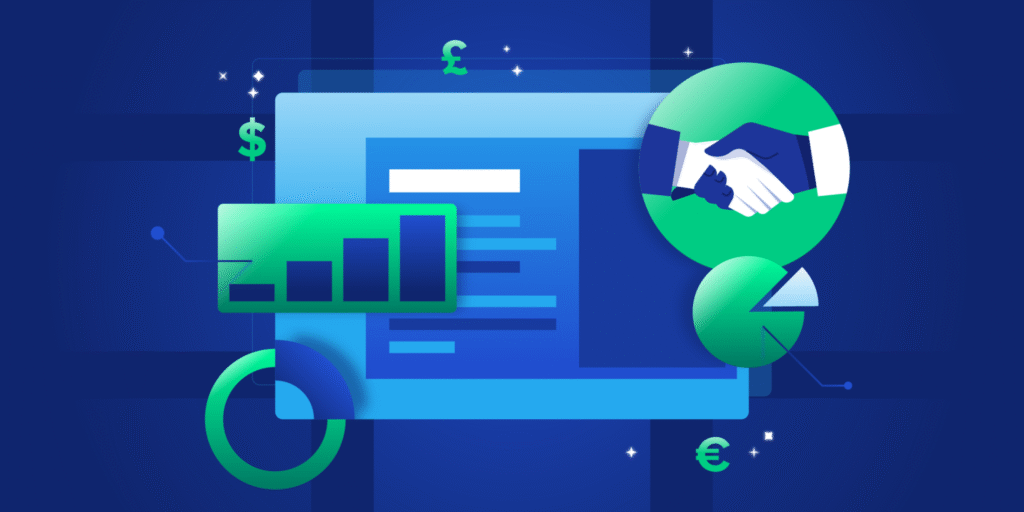Startups focused on cybersecurity are aggressively tackling some of the most pertinent issues in the modern world. There has been a noticeable increase in cyber threats and investors seem to be always on the lookout for advanced solutions to protect crucial data and users in the cybersecurity field. Unfortunately, no matter how remarkable your solution is, if you fail to present your vision in a clear manner, then you will definitely lose the attention of your audience. In these scenarios, a well made cybersecurity pitch deck to investor PPTX becomes incredibly useful.
In this article, you will find a step by step guide to create a memorable and actionable pitch deck for your investors. In the beginning, we will focus on the story, mission and the business strategies you need to present.
Why a Strong Cybersecurity Pitch Deck Matters
To put things into perspective, let’s think from the investor’s point of view for a moment. Imagine an investor seeing twenty pitch presentations this week and becoming exhausted. During the week their inbox becomes flooded. In this kind of scenario, a pitch becomes a read between the lines to find the most interesting solution.
A pitch deck for cybersecurity needs to do these three things in under five minutes:
- Establish credibility – illustrate how you are knowledgeable about the subject matter.
- Show how the solution is distinct – tell how the solution is different.
- Express the importance of the opportunity – explain in depth the opportunity.
A pitch deck for cybersecurity must make an emotional connection in the first five minutes. In any case, tailor an investor presentation for cybersecurity is necessary.
Slide by Slide: Winning Cybersecurity Pitch Deck

Envision the pitch deck you are building as a story with a logical continuum:
1. Title Slide
The first slide establishes the tone, as well as the focus. Use the name of the startup, the logo, tagline, as well as contact information. If the name does not relate to cybersecurity add a subtitle.
CyberFortify. Real-Time Threat Detection for Enterprise APIs.
Used for a strong visual background relates to security as digital shields, network visuals or dark tech patterns.
2. Problem Statement
Do not say, Cybersecurity is important. Rather, start with a story.
In 2024, one of the largest banks in the country lost 30 million dollars in 24 hours as a result of an API exploit. The attack went undetected until it was too late, despite the presence of firewalls and standard protective infrastructure.
Numbers and stats like these are devastating. The numbers emphasize that:
There is one, and it’s critical.
Current solutions are truly lacking.
A compelling cybersecurity pitch deck to investor pptx demonstrates the emotional and financial suffering these solutions cause.
3. Your Solution
This is where you bring in the product or service you are offering. Outline what you have built and how it directly helps mitigate the challenges mentioned earlier.
Make sure you explain in layman’s terms before giving technical explanation.
CyberFortify is an API traffic monitoring solution that leverages AI behavioral analysis to detect and mitigate anomalies in real-time.
Provide a visual or a demonstration that reinforces the explanation and showcases the solution.
4. How It Works
This slide is bordering on deep. With an easy flow chart or an infographic, outline your product in the field.
Infographic example:
Threat enters network
AI model scans behavior
Anomaly flagged
Real-time block
Incident captured and detail logged
This is not overly technical while still providing a clear visual that will help the investors understand and remain engaged.
5. Market Opportunity
Now you answer: “Why should I invest now?”
Use reliable sources of your Total Addressable Market (TAM), Serviceable Available Market (SAM), and Serviceable Obtainable Market (SOM).
The global cybersecurity market is projected to reach $350 billion by 2030. Our target segment — API protection for financial services — is $18B and growing at 12% annually.
Charts and bar graphs also work well and visuals are effective for text-heavy slides.
6. Business Model
Next, explain how you’ll make money.
Keep it simple:
Subscription-based SaaS: $1,500/month per client
Annual enterprise license: $25,000
Optional managed services: $5,000/month
If you have pilot clients, briefly mention feedback on pricing, or mention feedback on pricing and their willingness to pay.
7. Traction and Milestones
Show any real-world progress you’ve made.
Beta launch: Oct 2024
5 pilot clients including FinBank and HealthSecure
$180K ARR within 3 months
98% detection accuracy in real-time tests
This is building credibility. A cybersecurity pitch deck to investor pptx that includes hard numbers, case studies, or testimonials always feels so much more real.
8. Go-To-Market Strategy
Investors care how you’ll find, win and retain customers.
Avoid generic phrases like “We’ll use digital marketing.” Be precise:
Target: CISOs in fintech, healthtech, and logistics
Channels: LinkedIn ads, partnerships with MSSPs, webinars
Tactics: Cold outreach to 1,000 qualified leads/month via cybersecurity communities.
Use a timeline or funnel graphic to illustrate the conversion process from marketing to sales.
9. Competitive Landscape
Every cybersecurity investor understands the space is saturated. Do not convince yourself that you have no competition.
Use a quadrant chart or a comparison table:
Company
Real Time Detection Feature
Explain in clear terms how your offering is better, cheaper, faster, or more focused.
10. Team Slide
Investors want to know and understand the people behind the company. Focus on the core team and tell their story.
Sarah Chen, CEO — Ex-CTO at SecuBank. Over a decade in API security.
Jake Morgan, COO — Scaled Ops at a SaaS unicorn.
Arjun Nair, CISO — Former Red Team Lead at FireEye.
Adding headshots gives a personal touch to the narrative. Investors appreciate being able to put a face to a name.
11. Financial Projections
While this section does not require a deep dive, it must contain reasonable projections.
Use a 3-5 year projection:
- Revenue
- Expenses
- Gross Margin
- Burn Rate
- Cash Runway
Add a simple line or bar chart showing growth trends. Avoid overpromising — in case of a Cybersecurity pitch deck to investor pptx showing 500% growth without justification, it will definately raise suspecion.
12. Funding Ask
Lastly, Restate:
How much you’re raising
What it will be used for.
What milestones it will achieve.
We’re raising $2M to grow our team, expand marketing, finalize product v1.0, and acquire 50 enterprise clients in 18 months.
This demonstrates expectations based off numbers, not just a goal.
13. Closing Slide – Vision
End with a bang. Restate the vision and articulate why the company will win.
At CyberFortify, we believe that API security is the new frontier of cybersecurity. With AI and deep behavioral analysis, we aim to protect the arteries of the digital world in real time, at scale, and with confidence.
Add a thank you note with contact details. Use a bold background since this is your last impression.
Additional: Design Recommendations for Your PPTX
While making a cybersecurity pitch deck for an investor, remember that layout and consistency is more important than flashy transitions. Consider these design tips below:
- Adhere to one or two font types; e.g. Montserrat and Roboto.
- Adhere to a cybersecurity color palette which is blue, dark gray, black and white.
- Text icons that represent the features of the cybersecurity software. For example: shield, lock, radar, etc.
- Adhere to the readability of the slides; 30 words max.
- Charts should be clear with no clutter.
Tools like Canva, Pitch.com, or PowerPoint Designer can be used to aid the design process.
Common Mistakes to Avoid
In a pitch deck, what you leave out is equally as important as what you include, thus you should know what to include and what to remove.
- First, steer clear of buzzwords that make your explanation more complex.
- Do not overstuff slides with logos or text.
- Skipping the the problem slide is a big mistake as it is the anchor for all your arguments.
- Avoid fabricating metrics. Smart investors can and will catch it.
- Avoid asking for superficial requests. Instead, showcase impact of funding and funding allocation.
Final Thoughts: Shifting Your Focus Towards The Investor
Investors care about more than your product or service; they want to gauge whether they would get a return on their investment. They, or potential stakeholders, want to make a profit, thus speak about ROI, scalability, or defensibility.
Top FAQs On Cybersecurity Pitch Deck to Investor PPTX

1. What is a cybersecurity pitch deck to investor PPTX?
A cybersecurity pitch deck to investor PPTX is a pitch presentation usually made in PowerPoint or PDF format by cybersecurity startups to communicate their business idea, product, or service to prospective investors. It outlines the problem, your solution, market opportunity, business model, traction, and financial needs, all in a clear, visual storytelling format. It is meant to convince prospective investors to fund the vision.
2. How long should my pitch deck be?
Based on my experience, the most successful pitch decks have 10 to 13 slides. They maintain attention, while a longer deck tends to lose attention a bit more easily, unless in a more formal setting. Each slide needs to be clear and focused, with visuals far outweighing text – minimal text. Picture your deck as a movie trailer – it should grab attention, not tell the entire story.
3. Why is a cybersecurity pitch deck different from any other?
A cybersecurity pitch deck needs to:
- Build confidence from the start (security is about trust).
- Clarify and simplify the explanation of technical concepts.
- Illustrate the shortcomings of existing solutions.
- Provide authentic simulations or case studies.
In this sector, investors want assurance that your product has been field-tested, is fully functional, scalable, and has simple integration.
4. What images should I incorporate in my pitch deck to focus on cybersecurity?
Incorporate the following images such as:
- Infographics depicting the detection and prevention of threats pose by your product.
- Your solution architecture drawings.
- Your market size.
- Comparison tables of your competitors.
- As well as product and dashboard screenshots
Step aside from the product and dashboard screenshots and include visually appealing icons that enhance the overall radiance of your product.
5. What is the best way to simplify technical concepts to a non-technical audience?
Use a different analogy or story to introduce a different concept. Rather than saying, “Our AI model flags anomalous payload requests,” you can say:
“API requests are monitored and if any suspicious activity is detected, we step in to deal with the request just like a digital bodyguard for the APIs.”
First, explain in simple terms, and expand the justification in a deeper tech explanation in a later document.
6. What specifically financials should i have in my cybersecurity investor pitch.
At minimum:
- Projections for revenue (3-5 years)
- Expenditure on team, infrastructure, marketing
- Customer acquisition cost (CAC)
- Monthly spend
- Burn rate
- Runway based on current or requested funding
These demonstrate your planning discipline and show your sense for business, which investors appreciate.
7. What areas of my cybersecurity pitch deck should I focus on
Some major ones to be mindful of include
- Excesssive jargon (firmls risk sounding silly, users lose interest)
- No market validation (e.g., showing users or feedback)
- Underlying weak narrative (stories are essential)
- Financial indicators using unsupported data (inflation of 500% YoY growth)
- Bad marketing visuals (lack of visuals for slide logic)
8. For traction, what should I focus on if I haven’t made any sales yet.
Good inquiry, answer:
Indicators for product development
Progress of the beta waitlist
Letters of intent
Pilots
Spokespeople
Anything and everything showing construction.
9. How should I go about filing to send my investor pitch deck.

Make sure the following applies to you
Utilising the file to send opts
Google presentation mode
Stand alone express mode for printed format
Be sure links function in express mode.
10. Should I include a live demo during the pitch?
Not necessarily for the initial outreach. Sometimes a polished screenshot or an animated flowchart is easier. however during a second meeting or a demo day, a timed live demo of not more that 3 minutes can add to your credibility.
